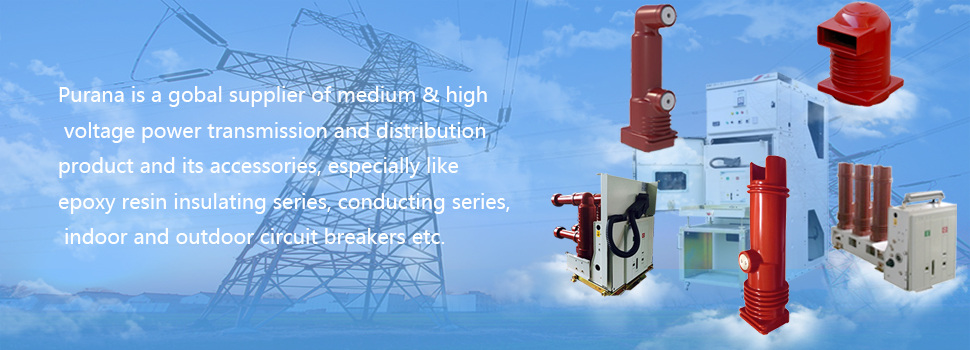South African Medium & High Voltage...
South African Medium & High Voltage Switchgear Market will be Driven by Utilities & IPPs until 2020
2011-02-25 10:28:40
The South African Medium and High Voltage Switchgear Market, finds that the market will be driven by utilities and IPPs until 2020.
"Eskom's continued investment into grid strengthening projects will drive growth in the HV switchgear market," notes Frost & Sullivan Energy and Power Research Analyst Marc Goldstein. "If the IRP2010 is implemented, the growth in both renewable energy and nuclear power plants over the next two decades will further advance this market."
The MV segment has become increasingly competitive over the past five years. Underinvestment in distribution system maintenance is a continued threat to sustained growth in this segment, with increasing outages affecting the entire grid.
"Rising electricity demand and a lack of timely investment into new generation capacity, has led to an ambitious new build programme for South Africa,” states Goldstein. “If implemented as planned, this plan offers the key to growth in both the MV and HV markets.”
The critical risks to growth in the MV and HV switchgear markets are the failure to implement the IRP2010 new build plans and the inability to maintain investment into refurbishment and replacement of switchgear equipment in the distribution infrastructure. There is a significant maintenance deficit that is not being addressed due to the inability of municipalities to earmark revenues from electricity for grid maintenance and the subsidisation of other loss-making municipal services.
“The attempted establishment of the regional electricity distributors (REDs) has no doubt contributed to the lack of investment into the distribution infrastructure,” explains Goldstein. “Equipment manufacturers and suppliers will need to find innovative funding and service approaches in order to unlock the current distribution system maintenance deficit.”
Investment in the distribution grid has stalled due to a lack of funding and skills at the municipal level. Suppliers and manufacturers need to offer municipalities turnkey supply and operational services with easy access to funding. Due to the need for municipalities to secure funding internally, equipment suppliers will need to find innovative service-feebased business models, which allow access to new equipment without incurring significant debt.
Despite uncertainty regarding the implementation of new build generation and transmission projects and a lack of investment into maintenance, there are significant opportunities for switchgear equipment manufacturers. Multinational OEMs will find it easier to compete in the HV segment, as the MV segment continues to fragment.
“Manufacturers will need to adopt a more flexible pricing and service model to maintain market share in the MV segment,” concludes Goldstein. “There will probably be significant partnerships and M&A activity in the market as parallel players seek competitive advantages.”
For more information on this study, please send your complete contact details to Christie Cronje, Corporate Communications, at christie.cronje@frost.com.
The South African Medium and High Voltage Switchgear Market is part of the Energy & Power Growth Partnership Services programme, which also includes research in the following markets: The South African MV and HV Cables Market, West African Transformer Market and The Southern African Renewable Energy Equipment Suppliers. All research included in subscriptions provide detailed market opportunities and industry trends that have been evaluated following extensive interviews with market participants.
"Eskom's continued investment into grid strengthening projects will drive growth in the HV switchgear market," notes Frost & Sullivan Energy and Power Research Analyst Marc Goldstein. "If the IRP2010 is implemented, the growth in both renewable energy and nuclear power plants over the next two decades will further advance this market."
The MV segment has become increasingly competitive over the past five years. Underinvestment in distribution system maintenance is a continued threat to sustained growth in this segment, with increasing outages affecting the entire grid.
"Rising electricity demand and a lack of timely investment into new generation capacity, has led to an ambitious new build programme for South Africa,” states Goldstein. “If implemented as planned, this plan offers the key to growth in both the MV and HV markets.”
The critical risks to growth in the MV and HV switchgear markets are the failure to implement the IRP2010 new build plans and the inability to maintain investment into refurbishment and replacement of switchgear equipment in the distribution infrastructure. There is a significant maintenance deficit that is not being addressed due to the inability of municipalities to earmark revenues from electricity for grid maintenance and the subsidisation of other loss-making municipal services.
“The attempted establishment of the regional electricity distributors (REDs) has no doubt contributed to the lack of investment into the distribution infrastructure,” explains Goldstein. “Equipment manufacturers and suppliers will need to find innovative funding and service approaches in order to unlock the current distribution system maintenance deficit.”
Investment in the distribution grid has stalled due to a lack of funding and skills at the municipal level. Suppliers and manufacturers need to offer municipalities turnkey supply and operational services with easy access to funding. Due to the need for municipalities to secure funding internally, equipment suppliers will need to find innovative service-feebased business models, which allow access to new equipment without incurring significant debt.
Despite uncertainty regarding the implementation of new build generation and transmission projects and a lack of investment into maintenance, there are significant opportunities for switchgear equipment manufacturers. Multinational OEMs will find it easier to compete in the HV segment, as the MV segment continues to fragment.
“Manufacturers will need to adopt a more flexible pricing and service model to maintain market share in the MV segment,” concludes Goldstein. “There will probably be significant partnerships and M&A activity in the market as parallel players seek competitive advantages.”
For more information on this study, please send your complete contact details to Christie Cronje, Corporate Communications, at christie.cronje@frost.com.
The South African Medium and High Voltage Switchgear Market is part of the Energy & Power Growth Partnership Services programme, which also includes research in the following markets: The South African MV and HV Cables Market, West African Transformer Market and The Southern African Renewable Energy Equipment Suppliers. All research included in subscriptions provide detailed market opportunities and industry trends that have been evaluated following extensive interviews with market participants.
Previous:
ABB launches eVD4, the pioneer
.gif)




